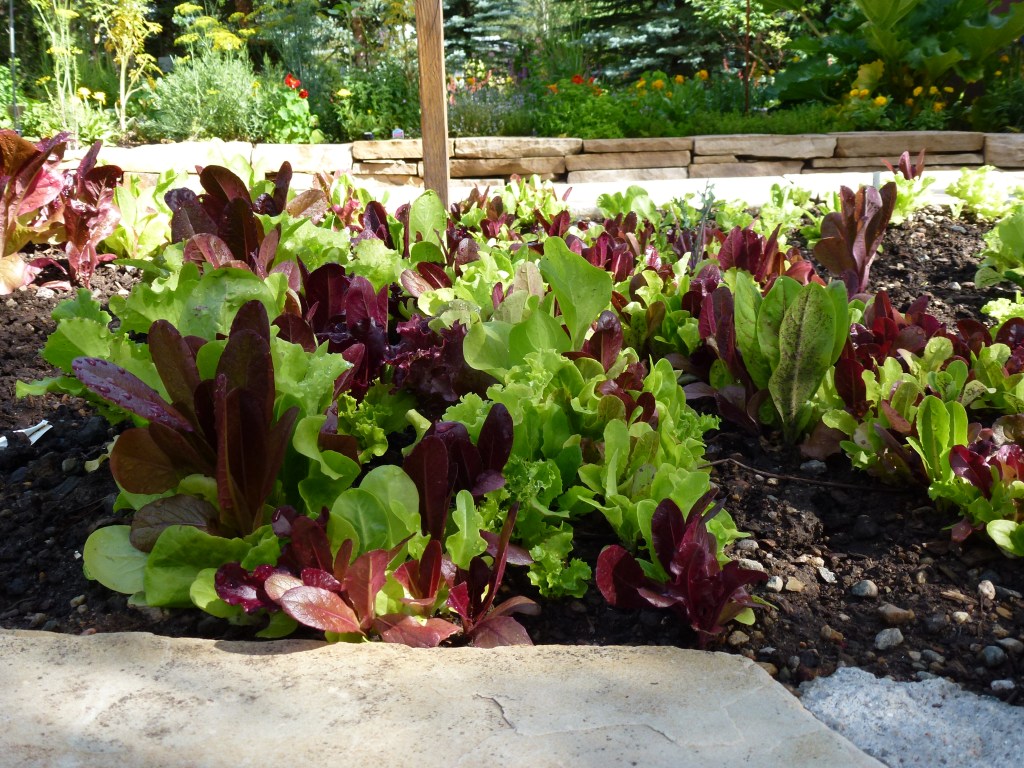They say successful comedians have the best timing. The same goes when seeding fall crops. Along the Colorado Front Range, we typically rely on mid-October as the first possible frost date. Using this timeline means there is a short window to plant right now.
Focus on cool-season vegetables that will sprout quickly in warm soil. They like to grow in cooler temperatures and can be harvested starting in a few weeks. Once they are up and growing well, it is fairly easy to cover them with frost blankets or sheets on cooler autumn days and nights so the harvest can continue well into fall.
Use seeds on hand or visit your local garden center to buy what looks good to you and the family. The seed packet will list the window of days in which seeds emerge and when they mature; look for short, 30-day growers, give or take.
The easiest, quick-maturing cool crops include lettuce, spinach, arugula, kohlrabi, green onions, kale, broccoli raab, Swiss chard, carrots and radishes. Also consider mustard greens, mizuna, collard greens, beets and salad turnips, which can be harvested when small (radish size) in about 40 days.
There are so many crops to choose from and only so much space, so remember that you can use empty containers; they are wonderful for fall crops and can easily be moved inside when nights are frigid.
For a warm crop, try seeding basil even though a plant may not grow up to six sets of leaves before frost. Because soils are warm, they should grow beyond the tiny microgreen stage if seeded immediately. Use the tasty young leaves in salads, on tomatoes and in sauces. (Do you know what food goes well with basil? Almost anything but oatmeal!)
Tuck in seeds wherever there is room in the landscape or vegetable area. Try the shady side of taller crops like tomatoes and pole beans as long as they receive at least four or more hours of sun a day. This location keeps the plants cooler late in the day.
As always, make sure the soil is loose and crumbly with no large clods so the roots can grow and get established. Leafy crops are high nitrogen feeders, so add a handful or two of compost or a light sprinkle of fertilizer into the soil if the area hasn’t been used in a while or recently grew crops.
My favorite way to seed leafy greens is to create planting areas by pushing aside about a half inch or less of soil, like creating a very shallow crater. Sprinkle seeds of your choice (lettuce, spinach, arugula, kale, etc.) in the space. Do not worry about seed spacing; they can be thinned later or not. The goal is getting the greens up and growing. Then take the moved-away soil and gently cover the seeds. They don’t need a thick layer to sprout.

Water with a light hose spray so the seeds are not displaced. Use this same planting method in containers.
Other non-leafy crops — including green onions, kohlrabi, radish and broccoli raab — can be planted in rows or squares as usual.
Since hot temperatures continue in September, it is important to keep seeded areas moist, not soggy, so they may need watering twice or more a day. The best-tasting leafy green plants are harvested when they are small (baby greens) and not fully mature. Use scissors and cut a few of the outer leaves first, not all, because you want the plant to continue growing.
Season extenders allow for extra fall growing days and extended harvesting. Consider putting in place tunnels or cold frames where sheets or row covers can quickly be attached. Most of the cool-season crops can easily tolerate nights in the 40s but will need to be covered when nights are in 30s and near freezing.
Check out my handy tunnel videos (below) from a few years back; they are still applicable.
Resources
Easy Hoop Houses, Part I youtube.com/watch?v=aFN9ldnwsNw
Easy Hoop Houses, Part II youtube.com/watch?v=B4YtOpXdgiQ
Time to Seed Fall Vegetables https://planttalk.colostate.edu
Betty Cahill speaks and writes about gardening in the Rocky Mountain Region.
The post Get your fall plantings in now, and enjoy veggies beyond Denver’s first frost appeared first on Patabook News .

